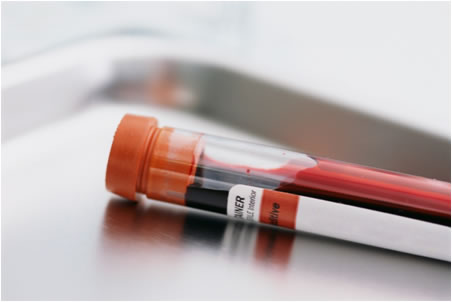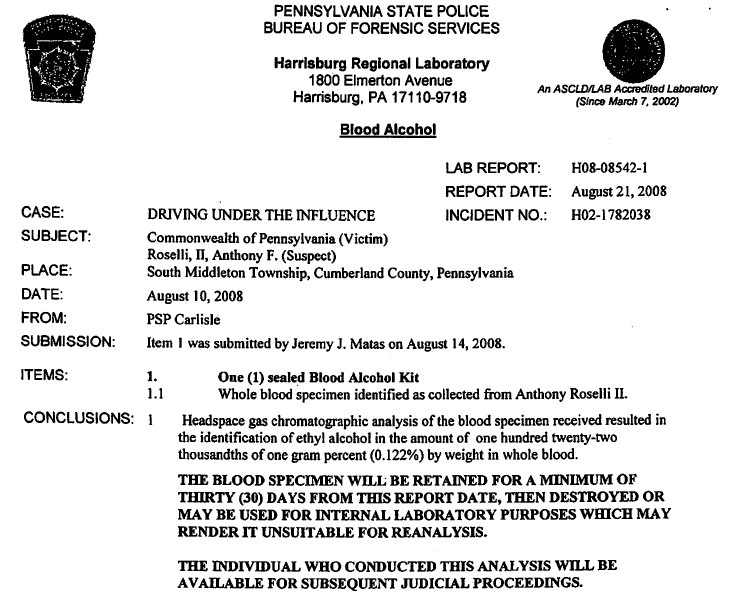Sometimes, one of the scariest tests in the forensic science world are the more “routine” ones, such as Blood Alcohol analysis (meaning EtOH). There are such high demands in terms of throughput and such little real training in analytical chemistry in performing the assay given to the analysts that the potential for error is rather high. There is also the chance of “over-reporting” (meaning taking the data and presenting the result as free from false positive and/or error). Also in the current modern performance of Blood Alcohol Content (BAC) testing in America, insufficient basic forensic safeguards are being employed. There are no national standards that we can point to that are universally implemented based upon true efforts to validate the method employed. This leads to a wide-scale and systemic lack of true validation in the performance of the analysis for EtOH.

- The myth of the “routine” Blood Alcohol Content analysis
In our sister blog, www.PADUIBlog.com, we have covered this and other potential problems in EtOH analysis in some detail.
We have further covered concepts that touch on analytical chemistry here.
Today, I present for your consideration a rather simple case not to retest Blood Alcohol results for its BAC. I submit to you that at best it is a fool’s errand and at worst a potentially dangerous method of incorrectly presuming trueness of the original reported result.
Here is what happens on real life with a Blood Alcohol analysis. The laboratory at the Government’s request performs its testing (correctly or not) and a result is reported out to the accused through his or her counsel. Oftentimes, it is a simple one sentence testimonial assertion such as “Item 1.1 (gray tube) was analyzed using Headspace Gas Chromatography with Flame Ionization Detector and was found to have 0.165 gm % of Alcohol.”
Infrequently, there is data to support such a testimonial assertion. We get a single sheet of paper much like the one above. Most criminal defense attorneys perform malpractice and simply accept that sentence as gospel truth. The few defense attorneys that demand the data that the laboratory rests upon to make such an absolute testimonial assertion rarely get the data despite discovery demands, motions and subpoenas. They become frustrated. They decide to send the 2nd tube that is collected (or the remaining aliquots of the 1st tube) to another independent laboratory for reanalysis for Blood Alcohol Content (BAC). (As an aside, it is hoped that prior to doing so, defense counsel has obtained a protective order otherwise, absent some statute, then the results of the retest might be discoverable or subject to a subpoena).
I suggest that doing a retest for BAC is not best. This is for several reasons. First, as mentioned in the aside above, any potential result of a retest, absent some statute, might be discoverable or subject to a subpoena. Second, any test that is performed is only as good as the sample. Even if the laboratory does the mythical perfect analysis, if the sample is not representative of the true condition of the whole, then the reported result can never be correct. Put more simply “Garbage In=Garbage Out (GIGO).”

- Garbage In Garbage Out model
It is the difference between endogenous (that which is your client’s fault from consumption and existed in the tube at the time of test collection) EtOH and exogenous (that which is from outside of the natural organic state) EtOH production (neo-formation, putrification).
As scientific skeptic, we should form the hypothesis that the sample itself is “garbage” and seek tests that can confirm or dispel this notion (falsification).
The issue in Blood Alcohol of the “GIGO” issue manifests itself in the case of neo-formation of EtOH in the sample due to the putrification of the blood. For a basic explanatory post of how this occurs please visit “What Pac-Man and Inflated and Incorrect Blood Alcohol Content results have in common”
If you are going to retest, to get around this “GIGO” problem it is best to perform one of four tests.
- First, one can have a DNA test performed on the sample. Obviously, the maximum that can be determined from such a test is that the contributor of the blood sample was or was not the accused.
- Second, one can perform a simple bacterial culture test to determine whether or not Candida Albicans is present.
- Third, one can perform an ion test to see whether or not Sodium Fluoride (NaF) is present and in what ratio.
- Fourth, and what I suggest the best to perform, is a simple and inexpensive blood glucose determination. If the blood glucose level is abnormally low and the accused presents with no medical history to explain the apparent hypoglycemia, then one could infer neo-formation due to purification. This would be an indirect test, but nevertheless a logical inference to be drawn from the data. This is especially so if you have other pharmacological data such as a drinking history that conflicts with the reported and expected result. Also, if you have someone who is prone to hyperglycemia, but that person’s blood glucose level is not as high as would be expected, then again we can infer neo-formation of EtOH.

- Blood Glucose Levels




Mehul B. Anjaria says:
I have indeed heard of cases in which DNA testing of these samples has failed to confirm their alleged donor.
Justin J. McShane says:
You would know. I would love to do a case study on such a case. Do you have data?
Mehul B. Anjaria says:
Justin, Here is one example that comes to mind
http://www.duicentral.com/dui_blood_case/index.html
Okorie Okorocha says:
Mr. McShane:
I do NOT disagree with your comments about the blood glucose levels.
You mentioned medical conditions… I am guessing diabetes?
That could be tricky if you have a diabetic, borderline diabetic or someone on some medications to regulate blood glucose or who uses injections of insulin.
BJ says:
is it possible to do a BAC from blood splatter samples at the accident or crime scene? what type of test and results would there be? How long would the sample last?
Thanks